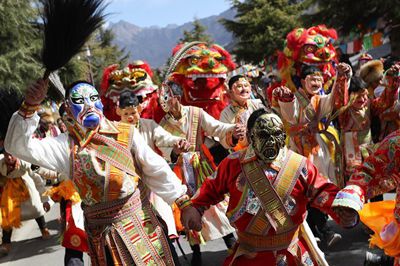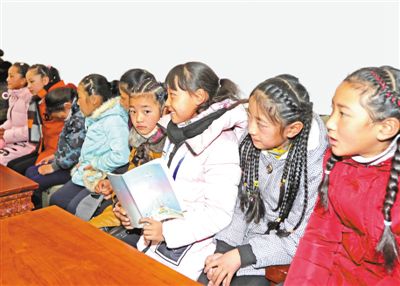During the period from Emperor Kangxi's reign to Qianlong's reign, there were conflicts among various religious sects in Tibet. The Mongolian Khan and local authorities tried every means to control the Grand Living Buddha in Tibet, so as to expand their power and consolidate their privileges. At that time, the reincarnated soul boys were determined through the ceremony of vision quests played by the most eminent sorcerer. With bribery rampant, most of the designated soul boys were from Mongolian or Tibetan noble families, and some were even family members of the sorcerer. For example, the 6th Panchen Lama, Zhongba Khutuktu of the Tashilhunpo Monastery, and the 10th Living Buddha of the Karma Kargyu Red Hat Sect were blood brothers; four Dorje Pamu Living Buddhas at the hierarch level were from the same family, the title of 3rd Dalai Lama was granted by Mongolian Altan Khan; the reincarnation of the 4th Dalai Lama was the great grandson of Altan Khan; the 7th Panchen Lama, the 8th Dalai Lama, Kolon Danzig Banzhu of the Tibetan local government, and Zhebu Zundanba from Mongolia were in-laws. The phenomenon of most Brand Living Buddhas coming from the same family was a major reason why Emperor Qianlong made up his mind to reform the reincarnation system of Tibetan Living Buddhas. In the Ming and Qing dynasties, the Tibetan affairs were handled by upper-class religious personnel in Tibet, Mongolian nobles who believed in the Tibetan Buddhism, and Tibetan nobles. Imperial envoys were sent to Tibet by the central government now and then to supervise the handling of major affairs. The Qing Government strengthened its direct administration of Tibet. Emperors Kangxi, Yongzheng, and Qianlong all beefed up regulation over remote Mongolian tribes and paid special attention to the lineages of Living Buddhas of the Dalai Lama and the Panchen Lama. In 1723, the first year of Emperor Yongzheng's reign, the central government sent 3,000 soldiers to Tibet for border defense. In the fourth year of Emperor Yongzheng's reign, Yongzheng approved the proposal for sending one high commissioner to Tibet to deal with local affairs. In the following year, the Qing Government officially set up the government office for high commissioners sent to Tibet. Member of the Grand Secretariat Sengge and Deputy Stadholder Mala were the first generation of high commissioners sent to Tibet. During the 185 years till 1911 when the Qing Dynasty was overthrown, a total of 173 high commissioners were sent to Tibet, 114 of whom took office directly. The high commissioners not only handled political affairs directly in Tibet, but also supervised the handling of important religious affairs. Apart from the procedure of vision quests, the confirmation of the reincarnated soul boys should also be reported to the high commissioners in Tibet, who in turn submitted the matter to the emperor in Beijing for approval. The system of drawing lots from a g |
- Home
- News |Tibet |Exclusive |China |World |Other Tibetan-Inhabited Area |Tibet through the Eyes of Foreigners |Related News
- Documents |White Papers |Others
- Photo |Politics |Economy & Society |Culture & Religion |Human & Nature |Beautiful Tibet |Other Tibetan-Inhabited Area |Exchanges |Related
- Video |News |Documentary |Micro-Video |Entertainment
- Art
- Tourism
- In Focus
- About Tibet






